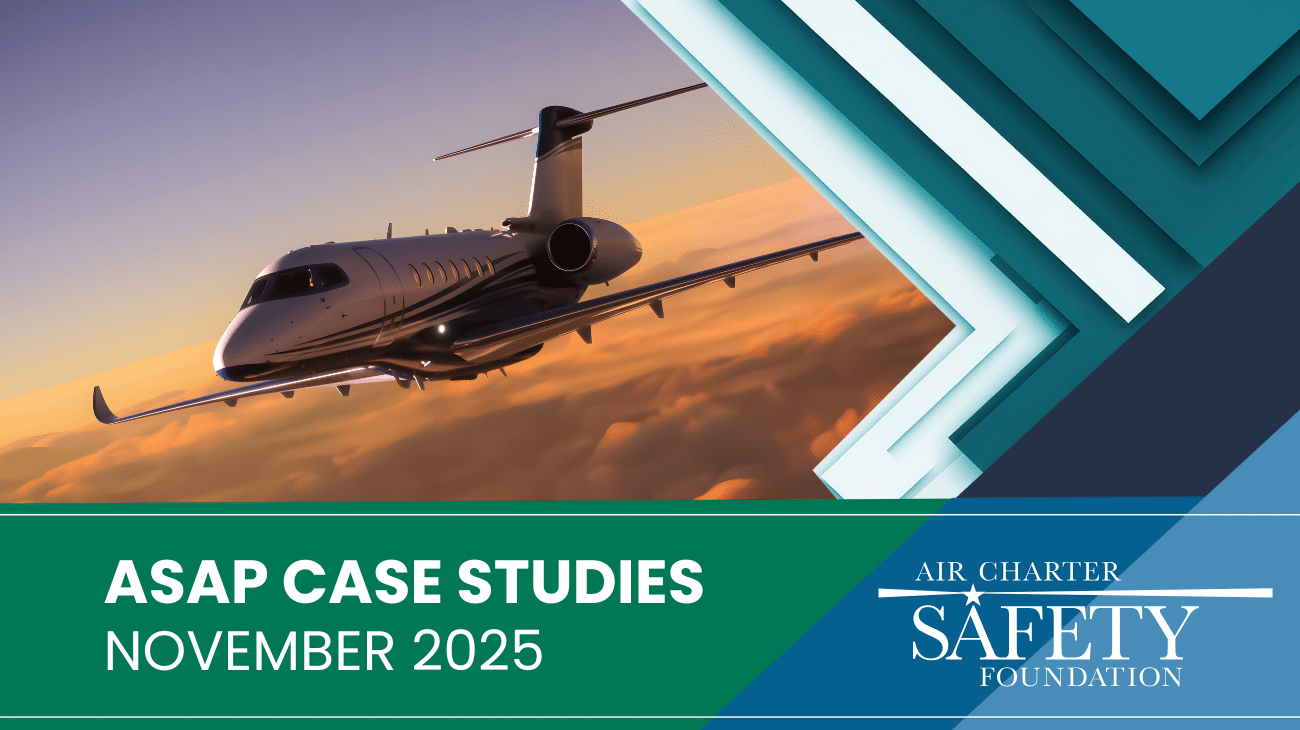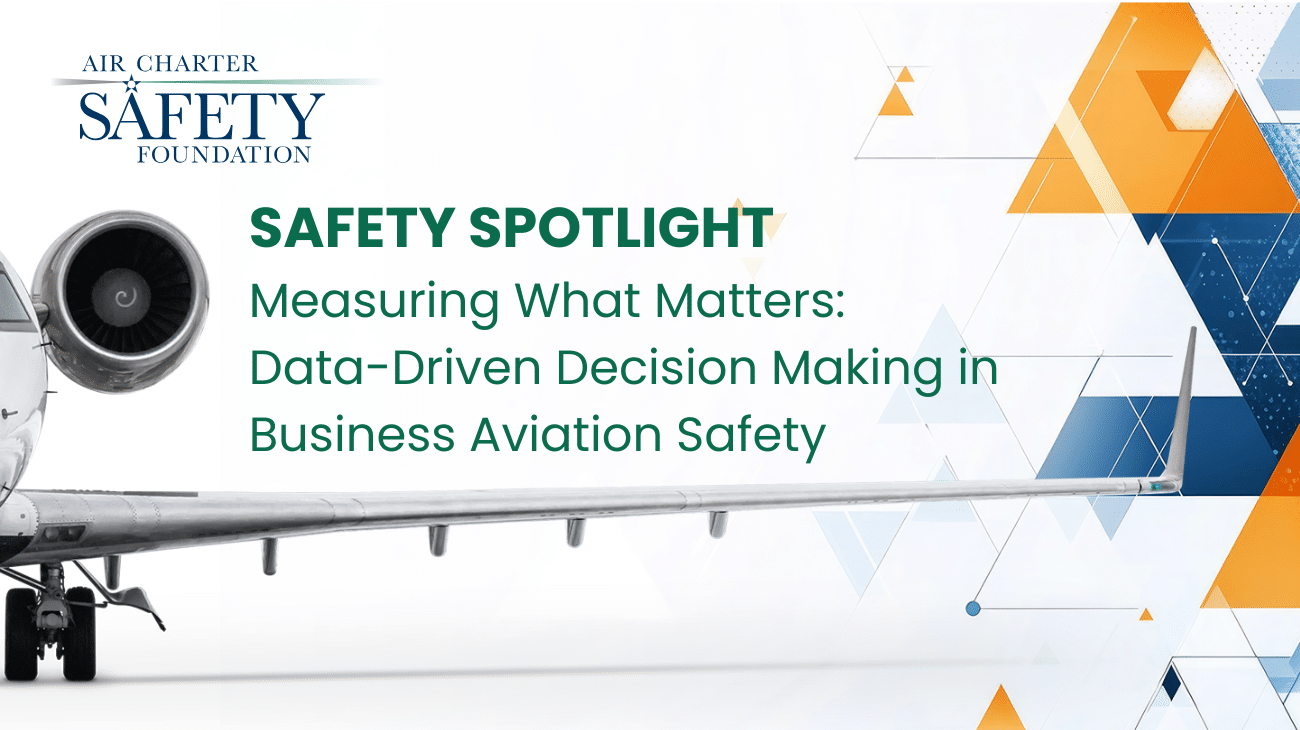Shortly after I arrived in Los Angeles last January for Heli-Expo, the world’s largest rotorcraft trade show, news flashed that Kobe Bryant was among the fatalities in a helicopter crash 50 miles away. At the Anaheim Convention Center, promotional tee shirts reading “Flight not going well?” on the front, and “Just land the damn helicopter!” on the back—part of event-sponsor Helicopter Association International’s “Land and Live” safety campaign—assumed new, heart-wrenching significance.
In the trade show’s opening keynote, FAA Administrator Stephen Dickson prefaced his prepared remarks by telling attendees, “Whatever the investigations ultimately determine, all of us in this room know that all too often helicopter accidents turn out to have been preventable.”
The same is true of fixed-wing accidents, and business aviation consumers must take an active role in understanding and mitigating the risks well before heading to the airport for a flight. That’s especially important in preventing plan-continuation bias—colloquially known in aviation as “get-there-itis”—from metastasizing into an accident.
Plan-continuation bias refers to the tendency to move ahead with a preset itinerary despite changing conditions, and its slippery slope is lubricated by pressures that are at the heart of business aviation’s appeal: it promises to get you somewhere on your schedule. You invest a lot to ensure you have that capability, and providers have an excellent track record of delivering. Passengers, pilots, the charter operator or management company—all want to complete the mission.
Operational trip levers should be in place to stop flights from leaving the ground in unsafe situations. But it’s a rare day when a well-equipped business aircraft is precluded from taking off. Proceeding in questionable or unsafe conditions is where continuation bias kicks in, with potentially fatal consequences. What procedures does your lift provider have in place to make sure that won’t happen? And how does the provider know that those procedures are being followed?
You need to determine the answers. A sound safety program that counters plan-continuation bias will mitigate the full range of factors that most affect risk levels: standard procedures; pilot training and currency; the aircraft; and most critically, the flight provider’s safety culture.
Safety (not simply a lack of accidents) requires “a community where there’s no pressure to go and where there won’t be any punitive outcomes if a pilot says no” to a flight, notes Bryan Burns, president of the Air Charter Safety Foundation. “It’s a top-to-bottom culture, and internal decision-making happens way before the flight departs.”
But, he adds, “We’re always concerned about who’s really making the final go-or-no-go call. In many cases, a user may have influence over the operator; the [customer’s] position and high profile does weigh on the decision-making process.”
Though safety is universally acknowledged to be the foundation of every aviation operation, investigations of many preventable accidents reveal that it is sometimes given lip service, at best. If you shop for access by price, you’re probably willing to fly on an aircraft with a worn interior or a platform from the previous century, but you’re likely not factoring a reduced safety margin into your savings. Yet safety costs money, and that’s an expense that is—or is not—represented somewhere in the price.
Alarmed at charter accident rates and causes in recent years, the NTSB has put improving Part 135 operations on its list of most-wanted safety-related goals, and its unheeded recommendations to the FAA can help guide your safety evaluation. The NTSB wants every charter operator to have a safety management system (SMS), flight-data-monitoring capability, and controlled-flight-into-terrain-avoidance equipment. Most charter and Part 91 operators lack all of this.
The FAA requires Part 121 operators (scheduled air carriers) to have a formal SMS. These programs elevate safety to the same priority level as the company’s core business processes. The EASA currently mandates them for Part 135 (charter) operators, and many expect the FAA to ultimately follow suit. But a Part 121 SMS can run hundreds of pages, and no standard condensed version for private aviation exists.
The NBAA believes an SMS should be “scalable,” and thus adaptable to a wide range of operators, said Doug Carr, the organization’s v-p of regulatory and international affairs. “But what is the minimum set of requirements for SMS? We can’t answer.”
Nonetheless, the NBAA has an 18-page Light Business Aircraft Airplane Flight Operations Manual Template, which any operator can use to create an SMS geared to its operations. The document can also serve as a good outline of safety issues that passengers should be aware of.
Meanwhile, a growing number of organizations are appointing “safety officers,” says Mark Millam, a Flight Safety Foundation v-p. But he notes that no standard accreditation program for business aviation safety officers exists. The FSF and the NBAA are exploring the development of such a program covering both Part 91 (non-commercial) and Part 135 operations.
In the meantime, “Do your homework and ask the right questions,” urges Burns, who suggests a few for charter customers. For example, ask for the operator’s FAA DO85, a document listing the company’s aircraft approved for private jet charter services. Ask whether the operator has had any accidents or reportable incidents, or FAA enforcement or letters of correction in recent years.
If the answer is yes, get the details. Ask about the company’s hull and liability insurance, and keep in mind that underwriters don’t write nine-figure policies—the range major operators often carry—without checking on the insured company’s operations, to reduce the insurer’s own risk of a big payout.
If you own an aircraft, you likely already have this mitigation expertise readily available. Major insurers offer free consultation services as well as discounts on additional safety services and coverage—for example, USAIG Safety Services and Global Aerospace’s SM4 Safety Program.
Unfortunately, “a lot of [policyholders] don’t take them up on it,” says Stuart Hope, founder of private aviation insurance specialist Hope Aviation Insurance. “[Most] just keep on trucking and don’t bother.”
Not every operator wants, needs, or can afford an industry-recognized safety accreditation, but their standards can suggest adoptable guidelines that can mitigate get-there-itis in any operation.
Requirements for Wyvern Wingman Standard operators, for example, include mandating that their pilots utilize a company-sanctioned Flight Risk Assessment Tool or similar method “to quantify the safety risks related to the flight for go/no-go decision making,” says Wyvern Consulting CEO Sonnie Bates. “Specific risks, such as marginal weather, air-traffic-control congestion, and terrain are all typical considerations in professionally designed Flight Risk Assessment Tools.”
If you travel on an aircraft your company operates, ask the flight-department director, chief pilot, or other rep about operating procedures, dispatch decisions, crew training, and other flight-safety issues. Does the aircraft fly to destinations that can be challenging because of terrain, weather, or other factors? Does the flight department have buy-in from senior management on safety standards? The conversation could ease your mind, as many flight departments take a proactive approach to safety.
If you own an aircraft, what conversation have you had with your pilots about operational limits? What pressures might they feel? How challenging are your operations?
If you charter, lease, or use a jet card, don’t leave safety vetting responsibilities to your security team. “People who perform executive protection may look at an airport where you’re taking off to see whether securing the facility is a problem,” says Steven Amitay, executive director of the National Association of Security Companies. “But I don’t think many security professionals are qualified to determine whether it’s safe getting in a helicopter on a windy day.”
Owner/pilots already have access to a wealth of information and advice on setting self-imposed minimums that may be above standard requirements. But have you committed them to writing in a procedures document so they mean something when it counts, and have you communicated them to those you fly with? Your passengers may be reluctant to ask safety-related questions—especially if they’re employees of your company. If they were to ask about weather minimums, fuel requirements, contingency plans, and how you monitor your fatigue level when you all climb onboard for the trip home after a long day, would the answers satisfy you, were the positions reversed?
Ask questions like these when selecting your provider or management company, establishing a flight department, or tapping corporate lift privileges, and you can be comfortable knowing the processes are in place to keep pressures and biases from compromising your safety. Due diligence may be out of sync with today’s one-click access ethos, but if you use business aviation, you should perform this evaluation as if your life depended on it.




